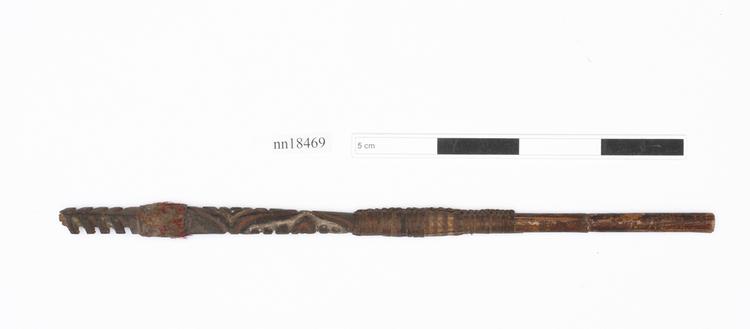

Terracotta figure of upper body of female with jewellery from the North West Frontier of India.
Head and upper torso from a human female figurine of 'Sar Dheri' type, in red terracotta, with small appliqué breasts, short out-spread arms, appliqué eyes, a now lost pinched nose, large circular earrings, and a thick, vertically incised tightly fitting necklace. The elaborate coiffure has plaits on the back indicated by black painted stripes above a black band, and on the front at the sides of the brow with large flat pellets decorated with incised dots (at least one now lost). This figurine is a type commonly found in early historic period, often Buddhist, sites in the North West and it is probably a votive figure, representing an unknown female deity. Figurines of this type are well known in museum collections in Pakistan and the west and were the subject of a 1990s Sorbonne PhD thesis written by Dr Ashraf Khan. Marked on the reverse in black ink with 'SD' (probably Sari Dheri, Mardan District, Khyber Pakhtunkhwa, Pakistan). The ancient mound at Sari Dheri is been reported to have disappeared in recent years. Archaeological context: presumably unstratified and from a surface collection. Early Historic Period, circa 1st century BCE. Given by Col D H Gordon (1952/3).






